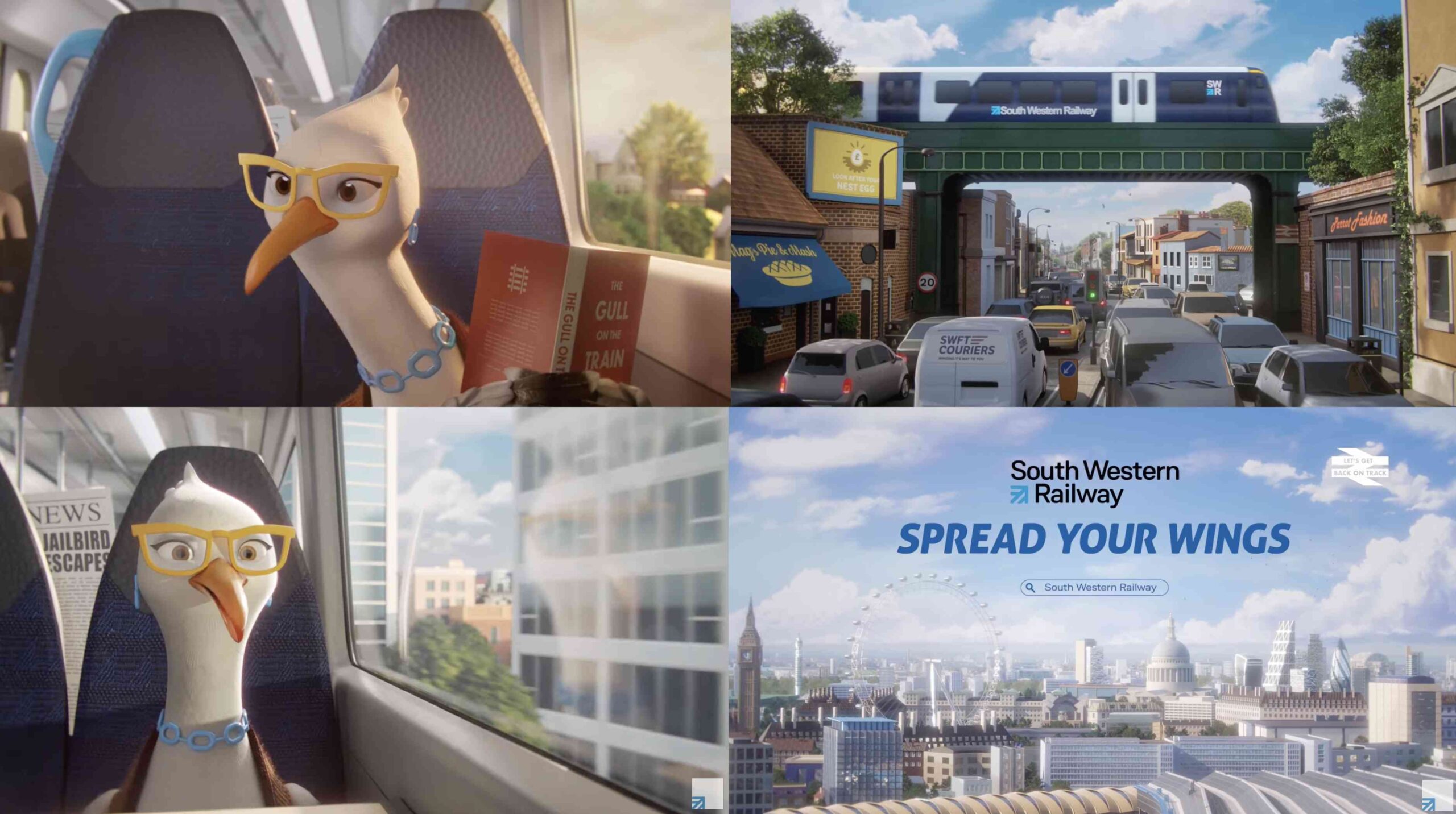
Last year, I had written about a delightful ad for a private train company in the UK—Avanti—by the agency adam&eveDDB. This one…
While writing about it last year, I framed it with the intrigue I felt when I watched it the first time. So I was not able to say much without revealing the incredibly charming narrative device used and how phenomenally appropriate it was for the product/service being sold.
The cute turtle, with a big smile plastered on its face, moves past the horrendous traffic because it’s on rollerblades. That sets up the intrigue beautifully towards the final payoff that arrives with a bang as the turtle enters a tunnel and exits in the form of the train.
I had also mentioned the song used in that ad since it contained the Hindi phrase ‘Badla zamana’. Take a look 🙂
I refer to that ad now because here’s a new ad for another private train company in the UK, South Western Railway (both Avanti and South Western Railway are 70% owned by FirstGroup, incidentally), by the agency St Luke’s, that uses a similar creative device to propel the storytelling – cute animals/birds!
Avanti’s ad featured a turtle, but it was not animated. South Western Railway’s ad features a seagull and a penguin and is fully animated. Both ads show these cute animals/birds using the train – Avanti’s ad shows it figuratively, while South Western Railway’s ad shows it literally.
While Avanti’s ad was a joyous watch that used a remarkably intriguing scene (a turtle with roller skates!), South Western Railway’s ad simply shows the 2 birds using the train like humans. Why a seagull and a penguin? That could be asked about the Avanti ad too – why a turtle? I had presumed that the turtle, given its image of being a slow-moving animal, is moving really fast, beyond all road-led impediments as a way to depict a train’s seamless movement since it runs on dedicated rails. I couldn’t find equally apt reasoning for the seagull and the pigeon, though.
But where the new ad shines is in the world-building. There’s so much detail in the background that may be missed when people see the ad just once, on TV.
The entire world of the ad is filled with bird references.
Consider the dialogs, for instance:
- ‘Save me a perch?’
- ‘It’s been a while! Thought you had migrated!’
- ‘You might say I’m free as a bird’
- ‘Quite the high flyer’
- ‘Gulls night out’
There’s background detailing too to aid the world-building.
- The book Sandy’s reading? ‘The Gull On The Train’!
- The brands and shops in one of the shots: ‘Swift Couriers: Winging it’s way to you’, ‘Parrot Fashion’, ‘Mag’s Pie & Mash’, Look after your nest egg’
- The news headline in the newspaper someone’s reading in the back seat? ‘Jailbird escapes’!
- …and of course, the main caption: ‘Spread your wings’!

While this was an enjoyable watch because of the detailing, I thought this one lacked the purpose and focus that the Avanti ad so effortlessly conveyed. The Avanti ad showed that trains can bypass all the traffic and help you move from point A to point B seamlessly. This one has a bird that can pull it off on its own without a train (Seagull; the penguin is a flightless bird, though), but it takes a train for helping make a watchable ad.
This ad also led me to wonder about the point of all that detail in the backdrop at the service of the device of the birds to voice the story. I wasn’t even able to discern ‘why birds?’ in the first place, and hence the intricate and very thoughtful detailing seemed double redundant to me… unless I’m missing something.
To be sure, I liked the details – it made me watch the ad more than once, and made me like the ad too. But what is the purpose of those details within the narrative for the brand/service being sold? Is mere ‘enjoyable ad’ (or ‘fun ad’) enough justification to indulge in the details that let people hunt for the references? In other words, are those references, which no doubt make people like the communication more and which lets them see it more than once, enough even if they are not adequately relevant to the product/brand being pitched?
A classic Indian example that I can recall in this context is the CRED ads series where actor Jim Sarbh says something utterly perfunctory about CRED. The rest of the ad is usually a well-known celebrity behaving completely against their usual type. Some of these ads are immensely enjoyable (the Dravid one is my favorite), but that fun element is completely unrelated to the product or the brand in every conceivable way. They feel like a spectacular trolling effort on part of CRED, on the audience, where CRED says, ‘We just want you to remember our ad and talk about it. We’d do anything for it, including barely talking about our product and… aah forget it… JUST HAVE FUN!!’.
